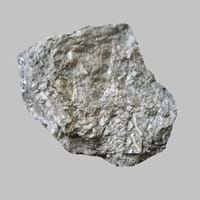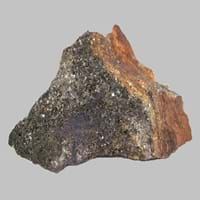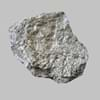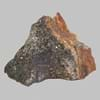Definition
Whiteschist is an uncommon rock type belonging to a class of metamorphic rock, this is formed at high-ultra-high pressures
Hornfels is a metamorphic rock formed by the contact between mudstone or other clay rich rock, and a hot igneous body, and represents a heat altered equivalent of the original rock
Origin
Tasmania
New Zealand
Discoverer
Unknown
Unknown
Etymology
From French schiste, Greek skhistos i.e. split
From German which means hornstone
Class
Metamorphic Rocks
Metamorphic Rocks
Sub-Class
Durable Rock, Soft Rock
Durable Rock, Soft Rock
Group
Not Applicable
Not Applicable
Other Categories
Fine Grained Rock, Medium Grained Rock, Opaque Rock
Fine Grained Rock, Opaque Rock
Texture
Foliated
Granular, Platy
Color
Colourless, Green, Grey, White
Brown, Dark Greenish - Grey, Green, Reddish Brown
Durability
Durable
Durable
Appearance
Banded and Foilated
Dull
Interior Uses
Decorative Aggregates, Interior Decoration
Decorative Aggregates, Flooring, Homes, Interior Decoration
Exterior Uses
Garden Decoration, Paving Stone
As Building Stone, As Facing Stone, Garden Decoration, Office Buildings, Paving Stone
Other Architectural Uses
Curbing
Curbing
Construction Industry
for Road Aggregate
for Road Aggregate, Roadstone
Medical Industry
Not Yet Used
Not Yet Used
Antiquity Uses
Artifacts, Monuments, Sculpture, Small Figurines
Artifacts, Monuments
Commercial Uses
Creating Artwork, Gemstone, Jewelry, Production of Lime
Cemetery Markers, Commemorative Tablets, Creating Artwork
Types
Not Available
Biotite hornfels
Features
High percentage of mica, Host Rock for Lead
Smooth to touch
Archaeological Significance
Famous Monuments
Data Not Available
Data Not Available
Sculpture
Used
Not Yet Used
Famous Sculptures
Data Not Available
Not Applicable
Figurines
Used
Not Yet Used
Formation
Whiteschist is formed by dynamic metamorphism at high temperatures and pressures that aligns the grains of mica, hornblende and other elongated minerals into thin layers.
Due to change in environmental conditions, rocks are heated and pressurized deep inside the Earth's surface. Hornfels is formed from the extreme heat caused by magma or by the intense collisions and friction of tectonic plates.
Mineral Content
Carbonate, Coesite, Quartz, Silica
Andalusite
Compound Content
CaO, Mg, MgO, Silicon Dioxide
Fe, Mg
Types of Metamorphism
Not Applicable
Not Applicable
Types of Weathering
Biological Weathering, Chemical Weathering, Mechanical Weathering
Biological Weathering
Types of Erosion
Chemical Erosion, Coastal Erosion, Glacier Erosion
Chemical Erosion, Glacier Erosion, Sea Erosion, Water Erosion, Wind Erosion
Grain Size
Fine to Medium Grained
Fine Grained
Fracture
Conchoidal
Conchoidal
Porosity
Less Porous
Highly Porous
Luster
Subvitreous to Dull
Shiny
Toughness
1
Not Yet Found
Specific Gravity
2.86
3.4-3.9
Transparency
Opaque
Opaque
Density
2.8-2.9 g/cm3
0.25-0.30 g/cm3
Resistance
Heat Resistant
Heat Resistant, Impact Resistant, Pressure Resistant
Deposits in Eastern Continents
Asia
Afghanistan, Bangladesh, Bhutan, China, India, Japan, Kazakhstan, Malaysia, Pakistan, Russia, Thailand, Turkey, Vietnam
Bangladesh, Bhutan, China, India, North Korea, Qatar, Russia, Saudi Arabia, South Korea, Thailand
Africa
Egypt, Ethiopia, Morocco, Nigeria, South Africa
Cameroon, East Africa, Tanzania, Western Africa
Europe
Austria, England, France, Georgia, Germany, Italy, Liechtenstein, Monaco, Norway, Slovenia, Spain, Sweden, Switzerland
United Kingdom
Others
Not Yet Found
Not Yet Found
Deposits in Western Continents
North America
Canada, Costa Rica, Cuba, Mexico, Panama, USA
Canada, USA
South America
Brazil, Colombia, Guyana
Bolivia, Brazil, Colombia, Ecuador
Deposits in Oceania Continent
Australia
New South Wales, New Zealand, Queensland
New South Wales, New Zealand, Queensland, Western Australia
All about Whiteschist and Hornfels Properties
Know all about Whiteschist and Hornfels properties here. All properties of rocks are important as they define the type of rock and its application. Whiteschist and Hornfels belong to Metamorphic Rocks.Texture of Whiteschist is Foliated whereas that of Hornfels is Granular, Platy. Whiteschist appears Banded and Foilated and Hornfels appears Dull. The luster of Whiteschist is subvitreous to dull while that of Hornfels is shiny. Whiteschist is available in colourless, green, grey, white colors whereas Hornfels is available in brown, dark greenish - grey, green, reddish brown colors. The commercial uses of Whiteschist are creating artwork, gemstone, jewelry, production of lime and that of Hornfels are cemetery markers, commemorative tablets, creating artwork.










